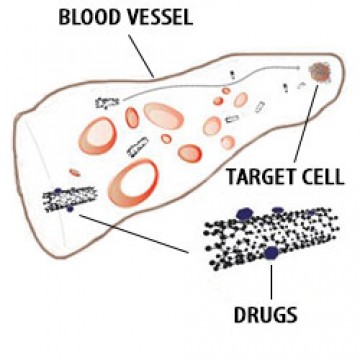The New Gs7™ Sensor Could Well Be the Solution, in the Fight Against Cancer

Vancouver, British Columbia, January 27, 2015 (Newswire.com) - The race has started to heat up, to allow us to gather enough data, to detect as early as possible any potential harmful diseases.
With the crushing weight of the economic realities of Obama care and the fact that in five short years Cancer care will be costing the U.S alone around US$170 Million.
Dr. Harold Finchley worked on the first FDA approved nano particle delivery technology for the treatment of breast cancer
Harold Finchley, Dr.
Solutions are not just necessary for the potential suffering of millions but with the growing aging population we need to make sure that we have a viable option, which will not bankrupt the economy. The New GS7™ Sensor could well be the solution, already being touted as the only choice we have in the fight against cancer.
Dr. Harold Finchley and Dr. Caitlin Hamilton are very excited that the first GS7™ Sensor model should be ready imminently and look forward to not changing the perspective of Life Science and Medical treatment. Dr. Hamilton said "It's more than just the math, the economics does drive the company and with this much money on the market and an overloaded medical system, it's long overdue.
However it's a new fundamental way of looking at a problem get to it before it comes an issue saving the unnecessary pain and expensive treatment as well as giving is new insights into how the body works".
The facts are out there and we cannot understand why others have not seen the same gigantic market place we do, our technology is far advanced from anyone else out there, because we had no choice, when we started this company it was in the time of the big Pharmaceuticals who had an agenda entirely different from ours, they wanted to make and sell as much product as possible ignoring the easier and of course more logical solution of prevention.
Canada has one of the best medical care systems in the world and we fortunately have not had the Pharmaceutical giants having as much power as they have in the states, leaving us free to try to tackle the problem from another angle a much longer term goal.
Semiconducting CNTs may prove useful for targeted drug delivery (estimated to become an US$80.2 Billion industry by 2015).
Anti-cancer drugs may be delivered more efficaciously and with fewer systemic side-effects using a "smart" nanotechnology platform than by conventional methods. Small-diameter semiconducting SWNTs represent one such promising platform, due to their strong absorbance in the so-called therapeutic infrared window (between 700-1100 nm, depending on body tissue type).
Projection Tables for 2020
Cancer prevalence was estimated and projected by tumor site through 2020 using incidence and survival data from the Surveillance, Epidemiology, and End Results (SEER) Program and population projections from the U.S. Census Bureau. Annualized net costs of care were estimated using Medicare claims linked to SEER data and adjusted to represent costs in 2010 US dollars.
Different scenarios for assumptions about trends in incidence, survival, and cost were assessed with sensitivity analysis¹. Projections of current trends in incidence (declining) and survival (increasing) have almost no effect on these estimates.
However, if costs of care increase annually by 2% in the initial and last year of life phases of care², the total cost in 2020 is projected to be US$174 Billion.
- ¹ Sensitivity analysis: An evaluation of the impact of different assumptions about model inputs (e.g., future cancer incidence rates) that are uncertain.
- ² Phases of care: Initial year after diagnosis, Last year of life, and the period between (Continuing). Months of survival are first applied to last year of life, any remaining to initial phase, then to continuing.
Read more at www.graphene-sensors.com